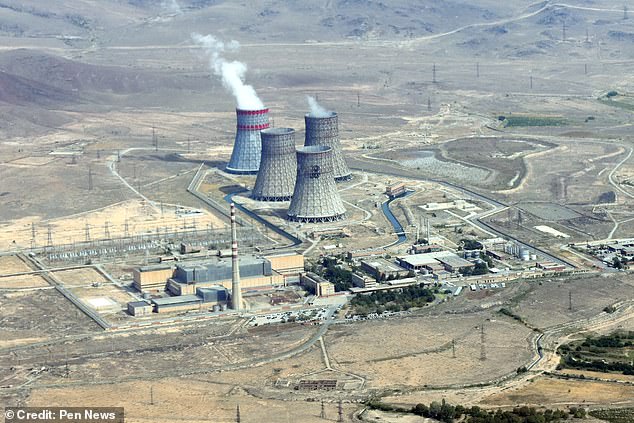
Aging Soviet Nuclear Plant Sparks Fears of Imminent Chernobyl-Scale Disaster
Soviet-Era Armenian Nuclear Plant: A "Chernobyl in Waiting"
[Image 1: Armenian Nuclear Power Plant near Yerevan, with caption: The aging Metsamor plant lies in a high-risk earthquake zone.]
A Soviet-built nuclear power plant in Armenia, operational since 1976, is raising global alarm as a “ticking time bomb” due to its location in a seismically active region. The Armenian Nuclear Power Plant (ANPP), just 22 miles from the capital Yerevan, supplies 40% of the country’s electricity but has long been criticized for its outdated design and vulnerable infrastructure.
A History of Risk
The ANPP’s two reactors were temporarily shut down for six years following the devastating 1988 Spitak Earthquake, which killed 25,000 people. Despite safety concerns, it reopened in 1995. Experts warn its Soviet-era technology mirrors Chernobyl’s ill-fated RBMK reactors, which caused the 1986 disaster.
Peter Marko Tase, a Caucasus region expert, calls the plant “Europe’s largest radioactive threat.” He emphasizes its “precarious concrete structure” and proximity to fault lines, stating a meltdown could trigger Chernobyl-level contamination: “Soil, water, and air pollution would loom over Europe for a decade.”
[Image 2: Chernobyl reactor post-disaster, with caption: Chernobyl’s 1986 meltdown released unprecedented radiation.]
Decades of Warnings
Criticism isn’t new. In 1995, the Washington Post highlighted fears, quoting Armenian parliament adviser Viktoria Ter-Nikogossian: “An accident would mean the end of Armenia.” Morris Rosen of the International Atomic Energy Agency labeled the design “clearly deficient,” noting modern standards would never permit its construction in a seismic zone.
Today, only one reactor remains operational. Tase warns the plant’s dependency on Russia’s Rosatom for upgrades—a $65 million project—ties Armenia to Moscow’s influence, complicating safety efforts. Skepticism lingers over Russia’s commitment to modernization, with delays risking further decay.
Global Calls for Action
Tase urges the EU and U.S. to intervene: “This nuclear time bomb threatens global security. Immediate action is needed to secure or shut it down.” Supporters argue the plant was built on stable basalt bedrock and has updated safety features, but critics dismiss these claims as insufficient.
[Image 3: Seismic hazard map of Armenia, with caption: Armenia sits on active fault lines, increasing earthquake risks.]
A Looming Dilemma
Closing the ANPP would cripple Armenia’s energy grid, yet keeping it operational risks catastrophe. As debates continue, the world watches a precarious balance between necessity and survival.
The plant’s operators were contacted for comment.
Chernobyl Legacy
The 1986 Chernobyl disaster remains a grim benchmark. Reactor explosions released radiation across Europe, displacing 160,000 people. A 1,000-square-mile exclusion zone persists, a haunting reminder of nuclear vulnerability—and a possible portent if Metsamor fails.
Key Facts:
- Opened: 1976
- Location: 22 miles from Yerevan, 10 miles from Turkey
- Reactors: 2 (1 operational)
- Power: 40% of Armenia’s electricity
- Risks: Earthquake vulnerability, outdated Soviet design, political reliance on Russia
The ANPP’s fate hinges on urgent international collaboration—or risks becoming another Chernobyl-scale tragedy.


